| Issue #132 • November/December, 2011 |
Not long ago a friend called to say he had seen an unusual rifle at the local gun shop. Shortly after that call I found myself in possession of a very nice Marlin M375, which was Marlin’s 336 lever action chambered in .375 Winchester. Unfortunately, that shop didn’t have any .375 Winchester ammunition. A quick search of the shelves of three other shops revealed that .375 Winchester cartridges are scarce and more than a little expensive. When I finally did locate two dusty and neglected boxes of shells, I was dismayed to find them priced at nearly $44 per box.
Instead of forking over $88 for two boxes of shells, I simply checked a few catalogs, ordered some dies and a few components, and loaded my own ammunition. My total cost per box was $9.26 a significant savings.
Ammunition has never been cheap, but it has skyrocketed in price over the past few years. For most of us, ammunition priced at $40 or more per box usually means that an otherwise useful firearm ends up standing in a corner to collect dust. It’s simply too expensive to shoot such costly ammunition with any real degree of regularity.
One reason ammunition is expensive is the cost of raw materials. The price of copper and lead have gone up, dragging the cost of cartridges skyward with them. What many people don’t realize is that the shiny brass case represents a very large portion of the cost of a cartridge. If you pick up that fired case and reload it, you can easily make ammunition for less than half the cost of buying factory-loaded shells. Such reuse is also environmentally friendly.
There is another reason why ammunition is expensive: Economies of scale. The large ammunition companies can make cartridges relatively cheaply when they set up a manufacturing line for a common caliber like .30-30 or .308 and then run millions of those cartridges. On the other hand, it is much more expensive for them to stop that line, then spend considerable time retooling and resetting equipment to produce a small batch of cartridges in a rare or obscure chambering such as .218 Bee, .25-35 Winchester, or the like. If you own a firearm chambered for a rare cartridge then you know that such ammunition is usually expensive and often hard to find.
Reloaders can make their own supply of ammunition for far less money. I have been safely and successfully reloading for more than 20 years. Reloading is easy and safe provided you exercise a little care and caution. If you can read a cookbook and follow a recipe, you can reload your own ammunition.
|
Types of equipment
There are several different types of equipment that can be used to reload. There are progressive reloading machines, capable of reloading 500 or more rounds per hour and frequently costing $500 to $1000. These units are complex and typically not recommended for the novice reloader. On the other end of the spectrum is the Lee Loader. These simple die kits can usually be found for about $30, and they do effectively reload cartridges. Unfortunately, I have found the Lee Loader somewhat slow to use.
The more common reloading setup consists of a single stage press, a set of dies, powder measure, scale, and a few other odds and ends. These machines are simple to set up, easy to use, and are capable of respectable reloading rates. With a little practice and some basic familiarity, it is easy to load 100 rounds in an hour. That hour of work can generate a savings of $100 or more.
Prices for basic, no-frills, single stage reloading kits vary considerably. The Lee Challenger reloading kit costs about $100. This equipment is a little on the rudimentary side, but it works. The Hornady Lock-N-Load Classic kit and the RCBS Rock Chucker Supreme kit both cost more (about $325) but are definitely heavier, better constructed, and built with an eye towards longevity. My own RCBS kit was purchased 21 years ago and has seen extensive service. I fully expect it to serve another two or three decades. Along with a reloading kit, you’ll also need to budget around $40 for dies and a shellholder.
Other components
|
In addition to the equipment, you’ll need your fired cases, some bullets, powder, and primers. Your local gun shop is often the best place to buy these components. Primers and powder can be mail ordered, but the extra charge for hazardous materials shipping quickly make mail order more expensive. Most local shops in my area sell primers for about $3.50 per box of 100. A pound of powder usually costs $20 – $25 and will load between 150 and 200 rounds of common deer cartridges. You’ll likely pay about $12 per hundred for 50- and 55-grain .22 bullets used for cartridges like .223. Larger 120- to 180-grain soft point bullets in most calibers run about $20 – $24 per hundred. Expect to spend around $50 to buy the primers, powder, and bullets needed to start loading your fired cases.
While we are on the topic of “hazardous materials,” let’s clear up a common misconception: modern smokeless gunpowder is not explosive. When burned in a confined space (like the inside of a rifle barrel) it generates rapidly expanding gases that propel a bullet. It will readily ignite, but outside of a gun barrel, or other pressurized area, modern gunpowder hisses, burns, and makes smoke, but it does not explode. I am far more concerned about the explosive potential of a gallon of gasoline in my shed than I am about a few pounds of gunpowder in my house. Store gunpowder in its original factory container, keep it cool, dry, and away from open flames, and it’s relatively benign.
Read the manual
The reloading process is simple. Your first task is to obtain a reputable reloading manual and read it. Read it carefully. Speer publishes an excellent reloading manual and I highly recommend it. It has an excellent section that details the reloading process step-by-step. Each different cartridge has its own section and lists several “recipes” for tried and tested loads. Each recipe or load will detail very specific components. Your job is to follow these tested recipes exactly. Reloading is quite safe, provided you follow these tested loads. Substitutions and changes to these loads are not recommended!
|
Reloading
Once you’ve read the reloading manual and obtained your reloading kit and components, you are ready to begin. The press needs to be securely mounted to a stable surface such as a workbench or sturdy table. If you are reluctant to drill holes in the dining room table, simply mount the press to a scrap piece of 2×6 lumber, and then use C-clamps to secure the lumber to the table.
Setting up and adjusting equipment varies from manufacturer to manufacturer. I’ve used equipment made by Lee, Lyman, RCBS, Hornady, Redding and others. The basic reloading process is very much the same regardless of the brand of equipment you buy. Simply thread the resizing die into the press and adjust according to the maker’s instructions. Lightly lubricate several fired cases with sizing lubricant and place one case on the press ram. Pull the operating handle. The die will simultaneously resize the case and punch out the spent primer.
It is then a simple matter to use a repriming tool to place a new primer in each case. Fill the primer tray with appropriate primers, place a case on the tool, and squeeze the handle. Your resized case is now reprimed and ready to hold the correct amount of an appropriate powder.
Mount the powder dispenser to the bench (or scrap lumber as with the press). Check and re-check your reloading manual. You will have to adjust the dispenser so that it drops exactly the right amount of powder each time you operate the handle. Adjustment is simple and usually requires turning a single knob, dropping a charge of powder, and checking the charge on your scale. With a little trial and error you can have the dispenser adjusted and ready to go in less than a minute. Once the dispenser is correctly adjusted for the specific powder you are using, you can simply place each case under the dispenser and operate the handle. Each case will be filled with the appropriate amount of powder. It is important that you work systematically and carefully. Place one charge in each case and one charge only! Visually inspect each case to ensure that each case has an appropriate powder charge.
Now you can install the seating die in the press and adjust it according to the manufacturer’s instructions. It may take a few minutes the first time you do this, but with a little practice it is an adjustment that can be made in a minute or less. Place a resized, reprimed, and charged case in the press, carefully place a bullet in the case neck, and pull the operating handle. You have just created a reloaded cartridge!
|
Potential savings
Buying the equipment and the components can be a considerable investment. Whether or not it’s an investment that pays for itself is largely a function of two factors: how often you shoot, and what calibers you shoot. If you shoot infrequently, it would take many years to recoup a $300 investment. If, however, you enjoy shooting, practice regularly, and end up shooting a box or more of ammunition each month, you can pay off the investment and realize considerable savings in a year or two.
There are savings to be had on almost any caliber of centerfire ammunition. .223, .30-30 and .308 are common calibers and are priced somewhat more reasonably than rare calibers, but you can still save about 50% over the cost of factory ammo by reloading them yourself.
Very real savings can be had by loading your own “high performance” loads. Regular soft point factory ammunition in .243, .270, .308 or .30-06 can be found in every gun shop for about $20 per box. If you are looking for something using a specialized high performance bullet like the Nosler Partition, you can expect to pay $40 or more per box. Reloaders can create performance ammunition using these premium bullets for far less money.
Perhaps the greatest savings occur when you happen to own and shoot an “oddball” caliber. I’ve been loading .218 Bee for an old 1940s vintage Winchester Model 43 for many years. These fine little varmint shells cost $78 per box at the gun shop. I load them for about $11. It doesn’t take long to recover the cost of a basic reloading kit when you can save close to $67 on a single box of ammunition. In addition to the .218 Bee and .375 Winchester, I have reloaded .32-20, .38/55, .350 Remington Magnum, and a truly antiquated round called the .310 Martini Cadet. The per box savings on all of these cartridges was substantial.
|
Reloading fired cases definitely saves money. The prudent reloader saves all fired cartridge cases and can often get a half dozen or so firings out of a particular case before it is too old to be reused. At some point it necessary to find more cartridge cases to reload. You can often find them lying about at informal ranges that seem to spring up in abandoned gravel pits. Friends who don’t reload are often happy to give you their fired cases (especially if you repay them with the occasional box of reloads). Sometimes it is necessary to buy new, never-fired, empty cases. Most cases cost somewhere between 25 and 50 cents each. Buying cases will make reloading somewhat more expensive, but the savings are still significant. That $8.56 box of .308 Winchester reloads would cost me closer to $10.50 if I had to factor in the cost of buying new brass every once in a while. Even with this added expenditure, the reloads are still half the cost of factory-loaded ammunition.
I know that my investment in reloading equipment has paid itself off in the form of savings many years ago. Any time I buy a new firearm it’s a simple matter of buying another set of dies for $30 or so and I’m able to reload this new cartridge as well. It’s an investment that provides great savings, great personal satisfaction, and a measure of independence.


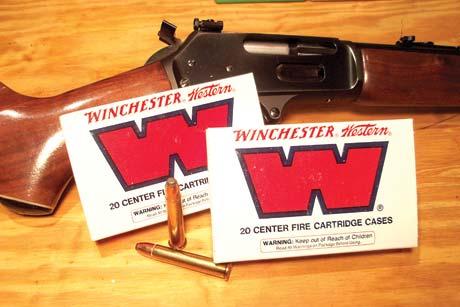




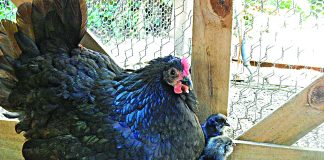





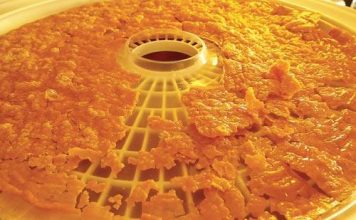
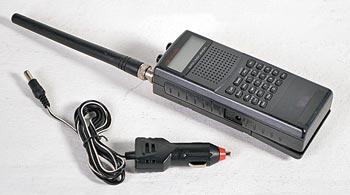

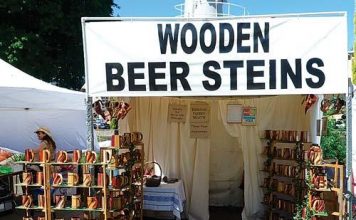

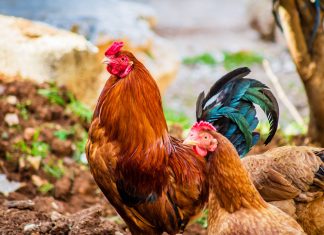
Great article. I’ve been reloading since 1963-starting with a Lee Loader for 308. I reload for many calibers that are in the category you mentioned 6.5 Jap, 7.7 Jap, 8 x 56R Hungarian, 6.5 x 55 Swedish–as well as common 44, 45, 38, 9mm,243,308,3006, and 7mm Rem Mag. Recently I’ve been having a lot of fun with my Winchester 92 25/20 WCF. Talk about hard to find and $80 for Remington 85 gr. corelokts. Who wants to try to enjoy shooting a can, stump, target, etc. at $1.50 a shot? It seems to make common sense, but as you said, the components can add up quickly–especially jacketed bullets at 30 to 40 cents apiece. However, I do it mostly for the fun of it, and cast bullets probably run 3 to 4 cents a piece I know the article is several years old, but it still is accurate today. thanks again